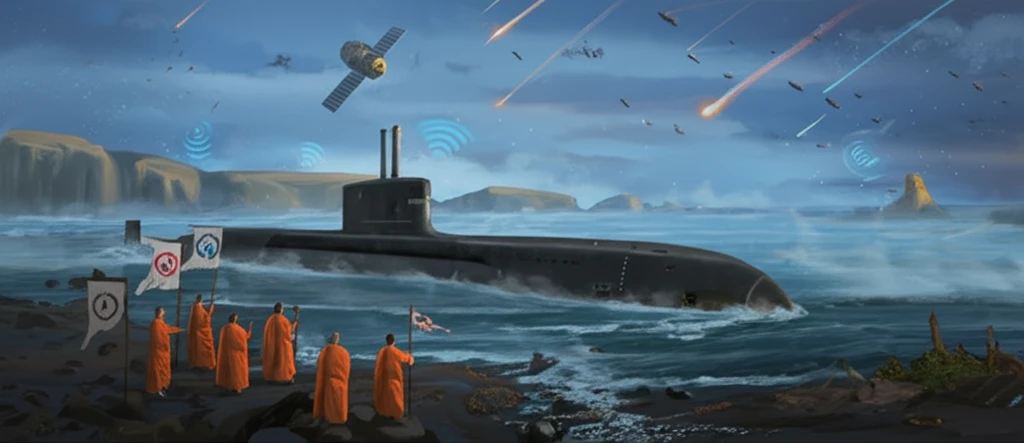
The Silent Echoes of Bangor: Can Poetry Unlock the Secrets of Peace and Protest?
"Decoding Messages in Verse: How Eryn Rowan Laurie's 'Bangor, 1982' Reflects the Tensions of a Nuclear Age"
In the tapestry of human experience, poetry often serves as a mirror, reflecting the anxieties, hopes, and dreams of a particular moment in time. Eryn Rowan Laurie’s 'Bangor, 1982' is one such mirror, capturing the complex emotions surrounding the peace movement and the ever-present threat of nuclear war during the Cold War era. Published in Anthropology of Consciousness, the poem acts as a powerful cultural artifact, inviting us to contemplate the intersection of military presence, spiritual seeking, and the yearning for peace.
The poem's title immediately grounds us in a specific place and time: Bangor, a town in Wales, 1982. This location is significant because it is near a major naval base, a strategic site during the Cold War. The poem explores the tensions between the military's mission of deterrence and the peace movement's call for disarmament, setting the stage for a deeper exploration of human consciousness in the face of existential threat.
Laurie’s verse weaves together stark imagery – from submarines and missiles to chanting monks and peace banners – creating a multi-layered narrative that speaks to the heart of the era's anxieties. By understanding the poem's context and dissecting its key elements, we can gain a deeper appreciation for its enduring message and its relevance to contemporary discussions about peace, security, and the human condition.
Decoding the Poem's Key Elements: Unpacking the Symbols of Conflict and Hope

The poem opens with a sense of clandestine activity, 'In my hands / cryptic messages / fragments of code / sent on satellites to Tridents out at sea.' This immediately establishes the presence of military technology and the secrecy surrounding it. The 'Tridents' reference specifically points to Trident submarines, a key component of nuclear deterrence, underscoring the immediacy of the nuclear threat.
- Military vs. Spiritual: The poem's juxtaposition of military technology and spiritual practice highlights the core conflict between the drive for security through strength and the pursuit of peace through inner transformation.
- The Power of Language: The 'cryptic messages' and 'peace-invoking words' both emphasize the power of language to shape reality, whether through coded commands or heartfelt pleas.
- Location Specificity: Bangor's role as a site of both military significance and peace activism underscores the localized impact of global tensions.
The Enduring Relevance of 'Bangor, 1982': A Call for Peace in a Precarious World
Eryn Rowan Laurie's 'Bangor, 1982' remains a potent reminder of the ever-present need for peace and understanding in a world still grappling with the dangers of nuclear weapons. By weaving together images of military might, spiritual yearning, and human vulnerability, the poem transcends its specific historical context and speaks to the universal desire for a more peaceful future. As we navigate the complexities of the 21st century, Laurie's words serve as a powerful call to action, urging us to embrace dialogue, diplomacy, and the pursuit of peace 'at any cost'.
